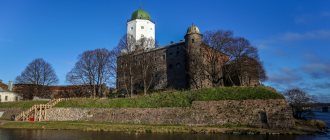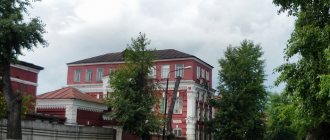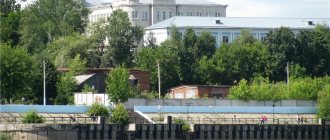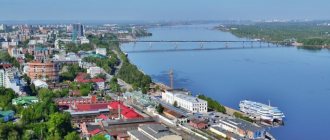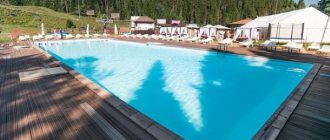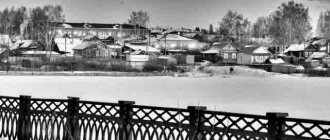Udmurtia is a republic located on the territory of the Russian Federation and is its subject. It beckons with its endless expanses and beautiful landscapes. More than 1.5 million people live on its territory. The total area of the republic is 42.06 thousand square meters. km.
There are six cities in this territory. The main one is Izhevsk (the capital of Udmurtia). Its population exceeds 640 thousand people. City status was granted in 1918. Votkinsk and Sarapul share the second place in population (about 99 thousand people). The third city in the republic is Glazov. Almost 95 thousand people live in it. In Mozhga the population does not exceed 50 thousand, and in Kambarka - 11 thousand.
Izhevsk
The Izhevsk workers' settlement was founded in 1760.
Since 1918 Izhevsk became a city. Since 1921 - the center of the Votsk Autonomous Region, since 1932 - the Udmurt Autonomous Region. Since 1934 - the capital of the Udmurt Autonomous Soviet Socialist Republic, since 1990 - the Udmurt Republic. In 1985-1987 it was called Ustinov.
Izhevsk today
Modern Izhevsk is a large industrial center, where more than half of Udmurtia's products are produced. The leading industries are metalworking and mechanical engineering, pigment metallurgy. The Izhevsk industrial complex is represented by 50 large enterprises of mechanical engineering, metallurgy, electronics, chemistry, etc. Among them are Izhmash OJSC, Bummash OJSC, Izhevsky Bearing OJSC, Izhevsky Moto OJSC, Izhevsky Mechanical State Enterprise, Izhstal OJSC, Izhevsky Radio OJSC and others.
Higher education institutions
Higher educational institutions of the city of Izhevsk are widely known for their academic traditions and high level of training of specialists: Udmurt State University and Izhevsk State Technical University, Izhevsk State Agricultural Academy and Izhevsk State Medical Academy and International East European University.
Culture
The theatrical art of Izhevsk is represented by the Udmurt Drama Theater and the Musical Theater of the Udmurt Republic (its repertoire includes performances in the national language of the Republic), the State Russian Drama Theater, the State Puppet Theater, the municipal theater "Young Man", a large number of youth and amateur studios.
In 2004, Izhevsk was recognized as the cultural capital of the Volga Federal District.
Administration of Izhevsk
Press service phone: 22-81-78, fax: 22-66-87, E-mail
Glazov
The city of Glazov is located in the north of Udmurtia, on the left bank of the Cheptsa. The village of Glazovo received city status in 1780.
Monuments
Within the city, in the Soldyr district, there is the largest archaeological monument of the Middle Ages (IX - XIII centuries) - the Idnakar settlement, which is under the protection of the Russian government and is of memorial value of world significance.
City plan
The master plan, unique in the history of Russian urban planning, developed by the famous St. Petersburg architect Ivan Lem, basically depicted the eye, or rather, the all-seeing eye of God. Such a rational-concentric layout went back to the type of “ideal city” of the Enlightenment. The architect repeated the idea of Versailles in this regard. Radial streets converged to a round central square - the “pupil”. The role of the upper “century” was played by the fortress wall (never built), and the lower one by the bend of the Cheptsa River.
Glazov today
Currently, none of the cities in Russia and Europe has similar urban planning analogues, and in Glazov the appearance of the city's development at the end of the 18th century has been preserved almost in its original form.
Now more than 100 thousand people live here.
Industry
Modern Glazov entered the new millennium as one of the largest cultural and industrial centers in the north of Udmurtia. The main industrial sectors are metallurgy, mechanical engineering, woodworking, and food industry.
The basis of the city’s industrial potential is the Chepetsk Mechanical Plant, the only enterprise in Russia and the world’s largest enterprise for the production of zirconium, uranium and calcium. OJSC Chepetsky Mechanical Plant occupies one of the key positions in Russia in the technological cycle of natural uranium and has modern technology for processing depleted uranium. One of the oldest enterprises in Udmurtia is a distillery whose products have been awarded many gold and silver medals at the most prestigious wine industry exhibitions in the world.
Address of the Glazov city administration:
427600 Udmurtia, Glazov, Dynamo St., 6, tel.: (34141) 4-13-00, 4-18-50, 3-66-65, E-mail
see also
- Udmurtia
- Cities of Russia
| [ + ] Cities by regions of Russia | |
| Cities of the North-West (NWFD) | St. Petersburg (and its cities) • Leningrad region (historical Staraya Ladoga) • Arkhangelsk region • Vologda region • Kaliningrad region • Karelia • Komi • Murmansk region • Nenets Autonomous Okrug • Pskov region |
| Cities of the Volga region (Volga Federal District) | Bashkortostan • Volgograd region • Kalmykia • Kirov region • Mari El • Mordovia • Nizhny Novgorod region • Orenburg region • Penza region • Perm region • Samara region • Saratov region • Tatarstan • Udmurtia • Ulyanovsk region • Chuvashia |
| Cities of Southern Russia (SFD) | Sevastopol (including Inkerman) • Republic of Crimea • Adygea • Astrakhan region • Krasnodar region • Rostov region |
| Cities of the North Caucasus (NCFD) | Dagestan • Ingushetia • Kabardino-Balkaria • Karachay-Cherkessia • North Ossetia - Alania • Stavropol Territory • Chechen Republic |
| Cities of the Urals (Ural Federal District) | Kurgan region • Sverdlovsk region • Tyumen region • Khanty-Mansi Autonomous Okrug - Yugra • Chelyabinsk region • Yamalo-Nenets Autonomous Okrug |
| Cities of Siberia (Siberian Federal District) | Altai Republic • Altai Territory • Irkutsk Region • Kemerovo Region • Krasnoyarsk Region • Novgorod Region • Novosibirsk Region • Omsk Region • Tomsk Region • Tyva • Khakassia |
| Cities of the Far East (FEFD) | Amur Region • Buryatia • Jewish Autonomous Region • Trans-Baikal Territory • Kamchatka Territory • Magadan Region • Primorsky Territory • Sakha (Yakutia) • Sakhalin Region • Khabarovsk Territory • Chukotka Autonomous Region |
| see also | Cities of the DPR, LPR, Transnistria, South Ossetia • Regions of Russia • Cities of Russia |
Kambarka
The city of Kambarka arose in 1761 as a settlement at the ironworks of G. Demidov. Located on the left bank of the Kama, eight kilometers from the port of the same name. The city has a developed transport communications system. A transport route passes through Kambarka; the transport port of Kambarka, which is a transshipment base for the Siberian Railway to the Kama River during the navigation period, is of great importance.
Kambarka today
The leading enterprises are OJSC Kambarsky Machine-Building, CJSC Metalist.
The population today is about 17 thousand people.
Natural resources
Not far from Kambarka there are reserves of lewisite, a type of chemical weapon that must be destroyed by the end of the first decade of the 21st century.
Address of the Kambarka city administration:
427950 Udmurtia, Kambarka, st. Sovetskaya, 18, tel/fax: (34153) 2-31-14
Kambarka as a center for the destruction of chemical weapons
The emergence of a large storage center for chemical toxic substances dates back to 1941, when chemical property base No. 136 of the State Vehicular Administration of the USSR NPO was located in Kambarka. In December 1941, the first shipments of lewisite, a poisonous gas with the smell of geranium, began to arrive at the site. In the 1950s stationary above-ground brick warehouses for storing chemical warfare agents are being built here. Five above-ground storage facilities with a concrete base were built, housing 80 metal tanks of 50 cubic meters each.
Mozhga
The city of Mozhga is located in the southwestern part of the Udmurt Republic on the Mozhginskaya Upland in the valley of the Syuginka River, a tributary of the Vala.
Location
The city of Mozhga appeared on the map in 1835 as a settlement at the Syuginsky glass factory. This is the only industrial center of southwestern Udmurtia. Today about 50 thousand people live here. The geographical location of the city is very advantageous in terms of transport: it is not located on the Kazan-Ekaterinburg railway. Therefore, Mozhga is a convenient place for holding various trade fairs and exhibitions of products manufactured by both local and non-resident producers.
Industry
Industry plays a leading role in the city's economy. The most developed industries are glass, food, woodworking and forestry. The leading enterprise in Mozhga is Stelo, a recognized leader of the Russian economy. This is the only enterprise in Russia that simultaneously produces products from clear, green, brown and semi-white glass.
Address of the Mozhga administration:
427760 Udmurtia, Mozhga, st. Mozhginskaya, 59, tel.: (34139) 3-12-26, 3-19-29, E-mail: [email protected]
Communications
The Udmurt Republic has all types of transport links with other regions of Russia. The transport network includes a network of railways, public roads, navigable river routes with access to the Caspian, Black and Baltic seas.
Air Transport
The only airport in the republic is located in the city of Izhevsk. Air transportation is handled by Izhavia OJSC, which performs regular flights to transport passengers and cargo on 14 air lines.
Railway transport
Railway transport plays a leading role in ensuring interregional connections of the Udmurt Republic. It carries out the bulk of interregional transportation of goods and passengers. The main directions are the lines: “Kazan-Agryz-Ekaterinburg”, “Kirov-Balezino-Perm”, “Balezino-Izhevsk-Alnashi”, “Izhevsk-Votkinsk”, “Lyukshudya-Kilmez”.
Sarapul
The city of Sarapul was founded in 1780 on the site of the village of Voznesenskoye and developed as a merchant center and port on the Kama River.
Sarapul today
Today Sarapul is the second largest city in the Udmurt Republic. A large industrial complex operates here. Mechanical engineering occupies a leading position. Sarapul enterprises have powerful industrial potential. Sarapul is the birthplace of the cavalry maiden Nadezhda Durova, who served in the army of the Russian commander Kutuzov. The population today is about 110 thousand people.
Location
The task has been set to turn Sarapul into a developed tourist center. The geographical location of the city is very favorable for these purposes: water, railway and highway transport arteries intersect here. Pleasure ships plying in the Kama, Oka and Volga basins call at the Sarapul port. Sarapul has something to show its guests.
Culture
The city center is a magnificent ensemble of buildings erected in the 19th century and of architectural and historical value. 150 architectural monuments of the city are protected by the state. Sarapul is also rich in cultural traditions: in the middle of the 19th century, the first public library in the Kama region and the first women's gymnasium were opened there. The local history museum and theater have almost a hundred years of history.
Address of the administration of Sarapul:
427600 Udmurtia, Sarapul, Red Square, 8, tel.: (34147) 3-20-40
Natural resources
The most important are oil, coal, peat and non-metallic building materials. Deposits of hard and brown coal have been discovered. The republic is rich in peat. The largest peat deposits are located in the basins of the Kilmez and Cheptsa rivers. Limestones, clays, sands, and gravels are common. Over 10 million tons of oil are produced annually in the republic. Total proven oil reserves are approximately 300 million tons. 46% of the territory of Udmurtia is covered with forests, half of which are coniferous.
Votkinsk
The city of Votkinsk was founded a year earlier than Izhevsk - in 1759, initially also as a workers' settlement at an ironworks.
Votkinsk today
Today the city of Votkinsk has the status of “historical”. On its territory there are 22 architectural monuments, 23 monuments of historical and monumental art, 1 archaeological monument - the Votkinsk settlement, which dates back to the 3rd - 5th centuries. AD
Number
The population today is more than 100 thousand people. The area of the city is 112.8 sq. km., most of which is occupied by forest and agricultural land. The city's industrial complex includes 15 large and medium-sized enterprises and 44 small ones. The leading enterprise of the city is the Votkinsk Machine-Building Plant.
Culture
The great Russian composer Pyotr Ilyich Tchaikovsky was born in Votkinsk. The city operates the State Memorial Architectural Complex “Museum - Estate of P. I. Tchaikovsky.” Traditional music festivals dedicated to his work are held annually in the spring.

